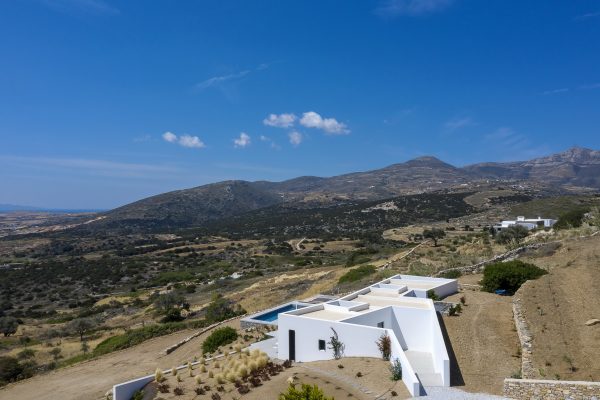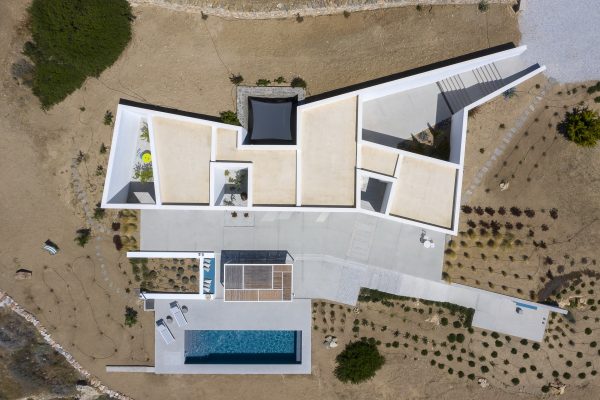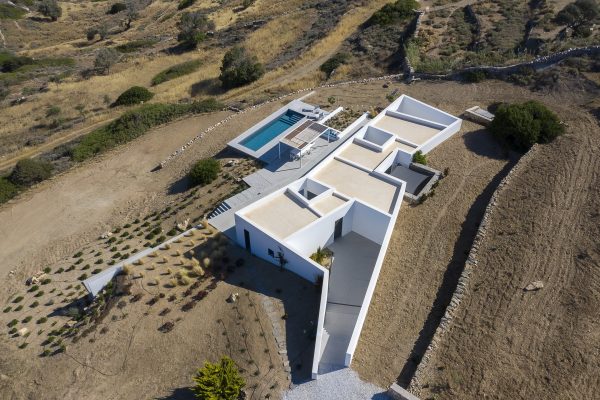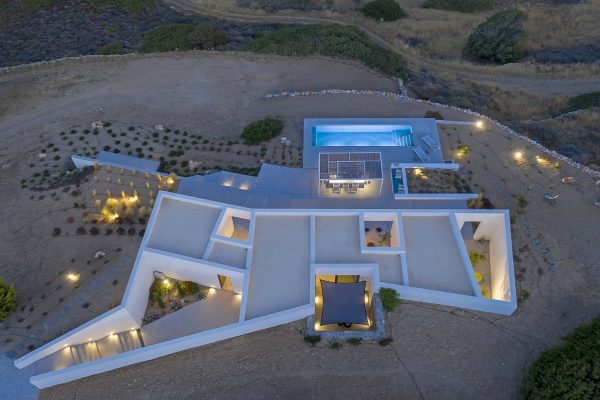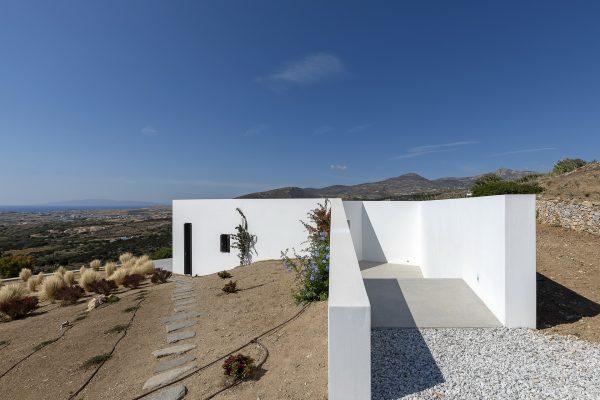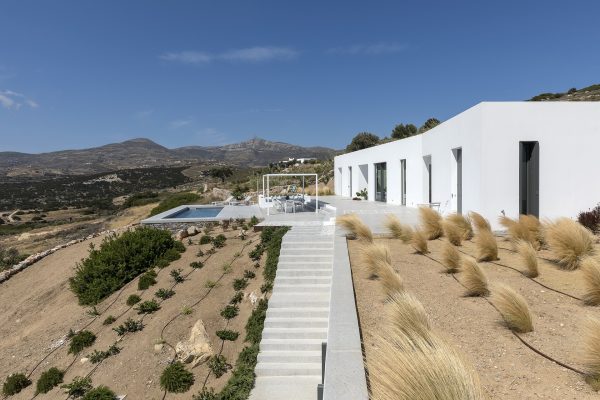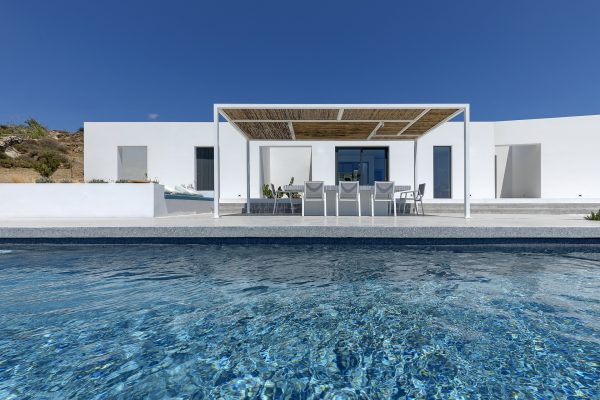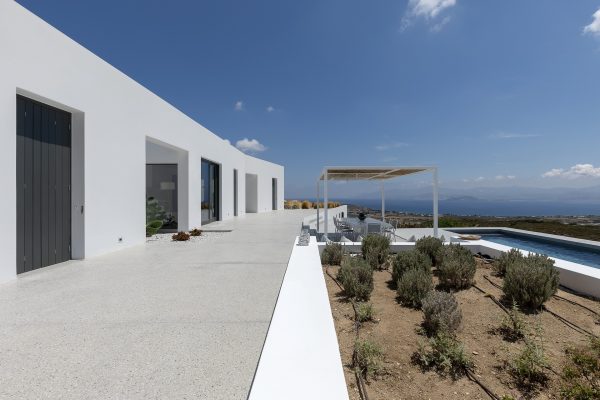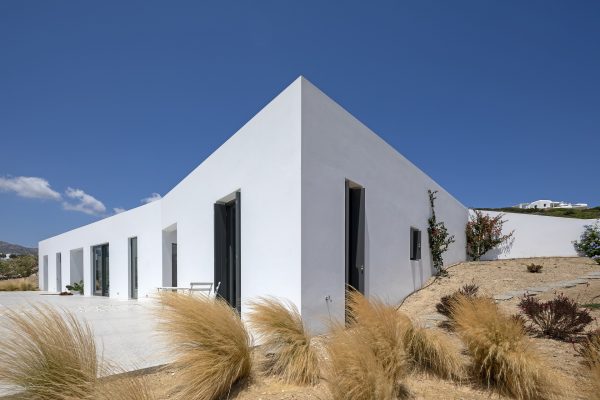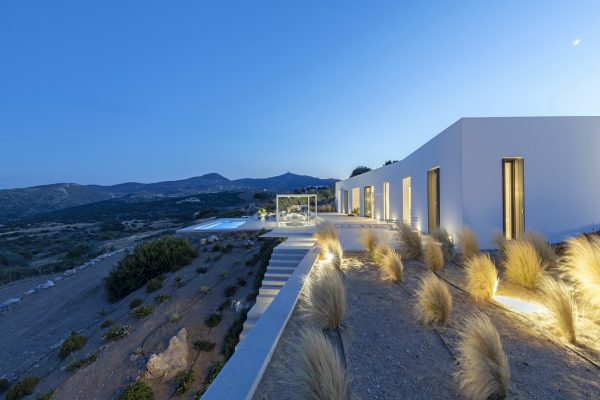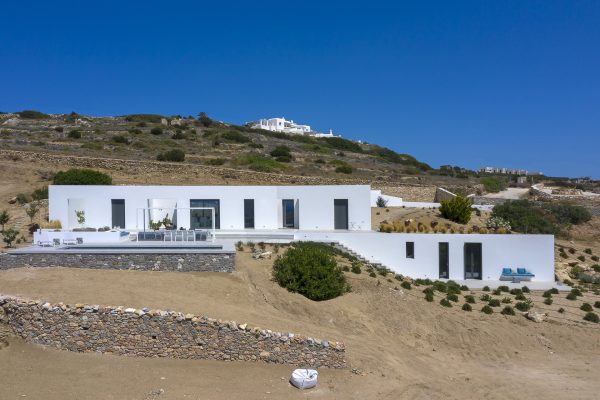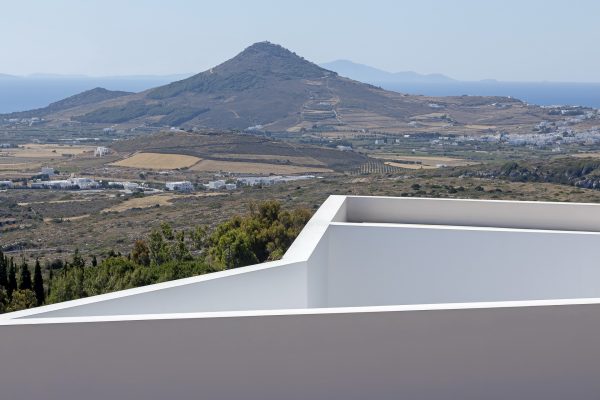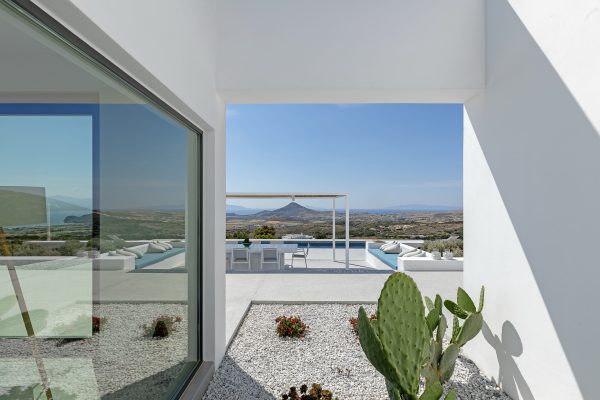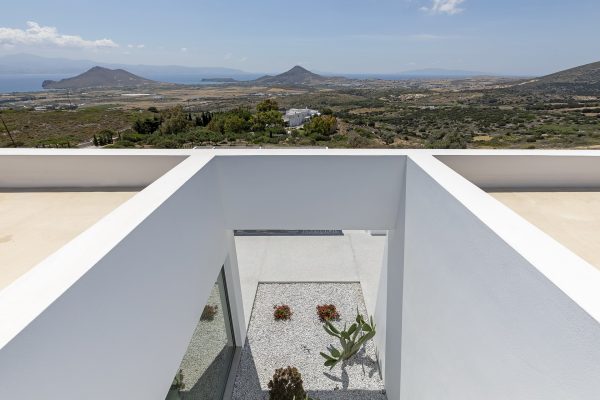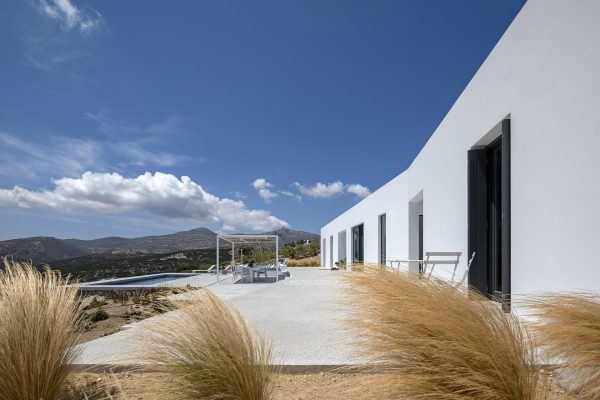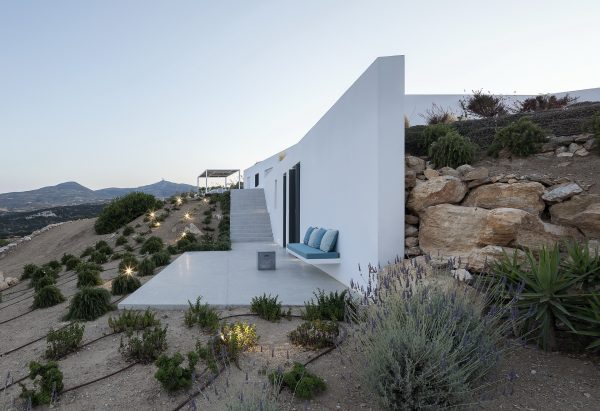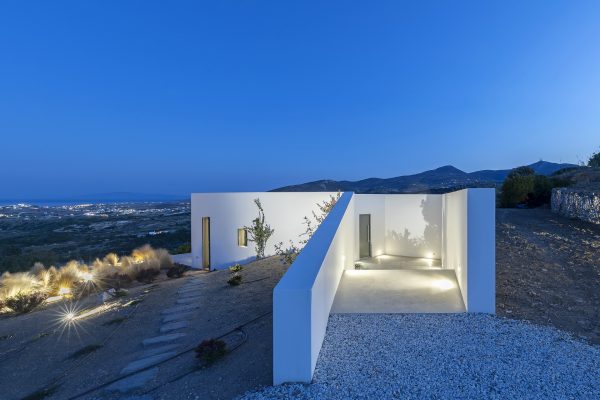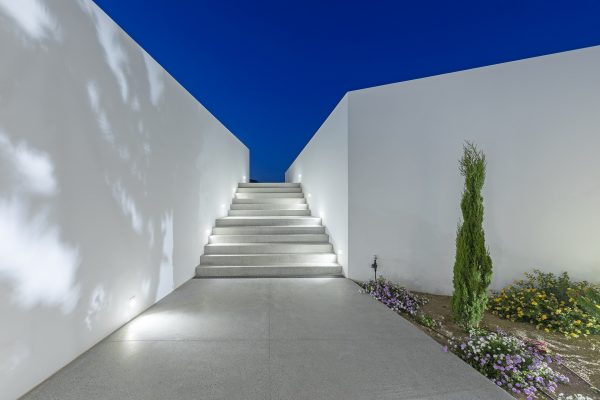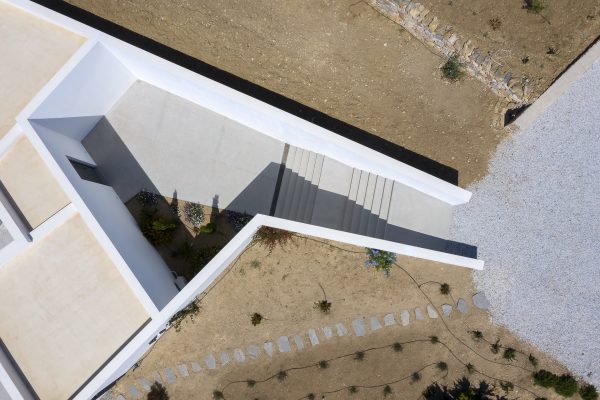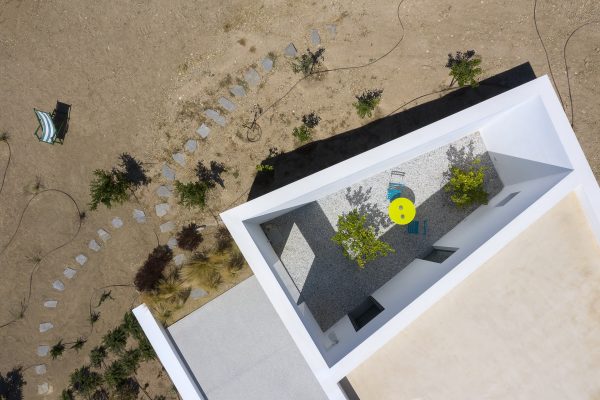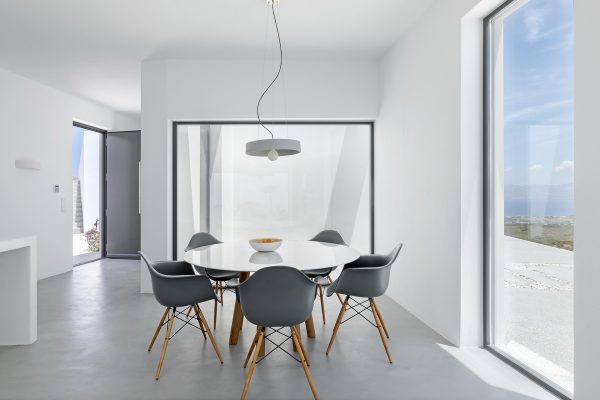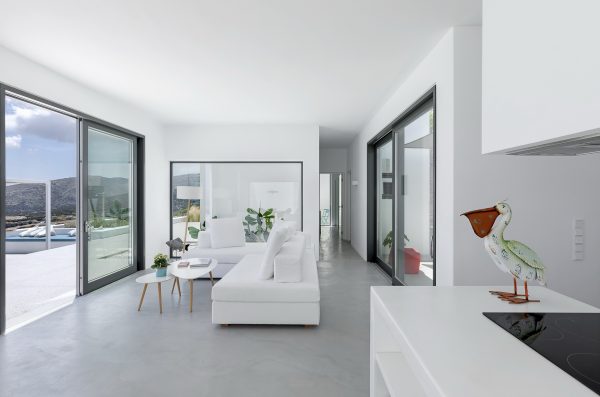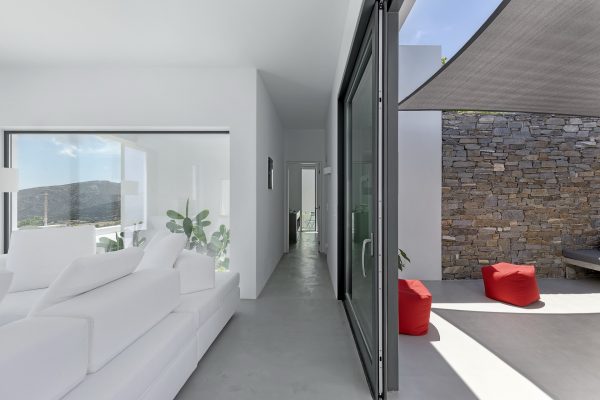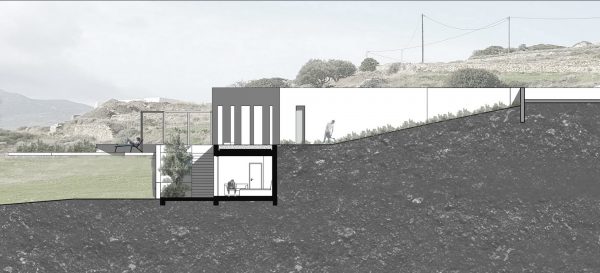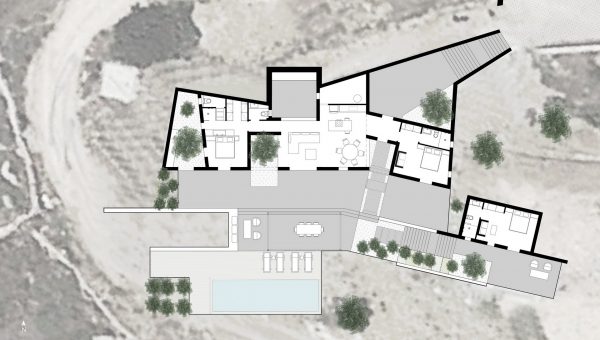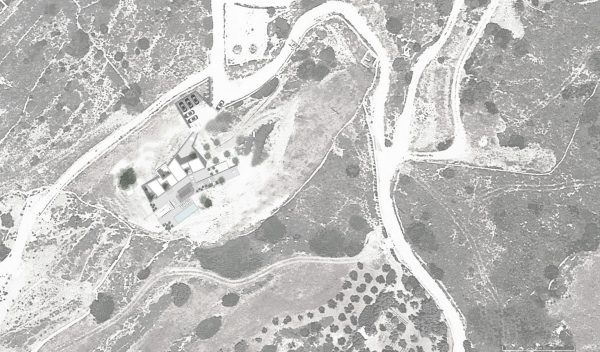Nest
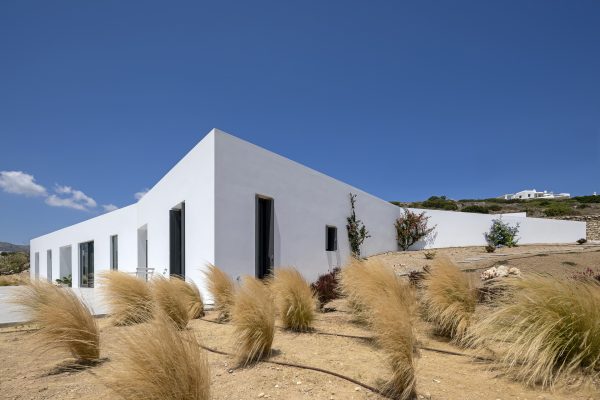
View Gallery
Type
Summer Houses
Location
Kostos,Paros, Cyclades
Type
2018
ARCHITECTURAL DESIGN
REACT ARCHITECTS- NATASHA DELIYIANNI , YIORGOS SPIRIDONOS
COLLABORATING ARCHITECTS
ANREAS ANDROULAKAKIS - TATIANA TZANAVARA
COLLABORATING ARCHITECT SUPERVISION
YANNIS VAGIAS
STRUCTURAL ENGINEER
AGGELOS KOTTIKAS
MEP
NIKOS CHRISTOFYLLAKIS
VISUALISATION
NIKOLLETA GERORGOPOULOU
PHOTOGRAPHER
PANAGIOTIS VOUMVAKIS
The site used to be the home of a family of partridges. The family continues to consider the site it’s nest.
Τhe site is located at Ag. Giannis at the municipality of Kostos on the island of Paros. It’s orientation on the long side is southeastern, with a view towards the sea and the gulf of Naxos. The house extends on this side. The building protrudes from the slope of the hill, fully adapted to the contours of the terrain. On the western side it is almost underground. The zig-zagged walls refer to the dry-stone walls of the Cycladic rural landscape. They combine to create a “shell” that maintains a favorable microclimate regardless of the weather conditions.
From the west side and the highest point of the site the visitor descends towards the heart of the house. The rooms of the main house are connected by a long corridor, offering framed views of the Kefalos Cape in Paros and of neighboring Naxos. Upon approaching the house from the road it is barely visible. The descent towards the interior and then outside, to the big outdoor plateau in front is a gradual transition from within the house and the framed views of the Aegean landmarks towards a panoramic view: Naousa, Naxos’ chora, the Antikefalos Cape, the west side of Naxos, Kastraki, Herakleia, and Ios.
The courtyards are paved with mosaic and are positioned next to the living areas. They are adapted to the natural slope. The courtyard on the west side refers to the living room. The living room, the kitchen, and the two bedrooms have a view towards the sea. On a lower level, a semi-subterranean guest house concludes the design.
The doors and windows are made of wood planks, colored grey. The retaining walls are made from stone. The landscape architecture is limited to the courtyards. The rest of the site retains the natural Cycladic landscape.The walls have a low height and they surround the central courtyard following the proportions of traditional architecture. An emphasis has been given to the “fifth” elevation, the elevation of the rooftops. Repetition and standardisation of the openings are of elementary importance to the design.
The architecture has a dual nature: it is both integrated into the landscape geometries “elevated” from them by a distinct white wall that generates living spaces. This wall morphes into a façade that delineates the different levels and organizes living and viewing spaces. The design avoids the typical white volume clustering, defining a series of patios, walkways, enclosed courtyards, descents, and connecting stairs behind the white wall. The architectural language is a result of the use of natural elements. It fills in voids and redefines necessities, images, and living spaces. It complements the surface of the landscape, it takes root, and it becomes an integral part of it’s surroundings.
